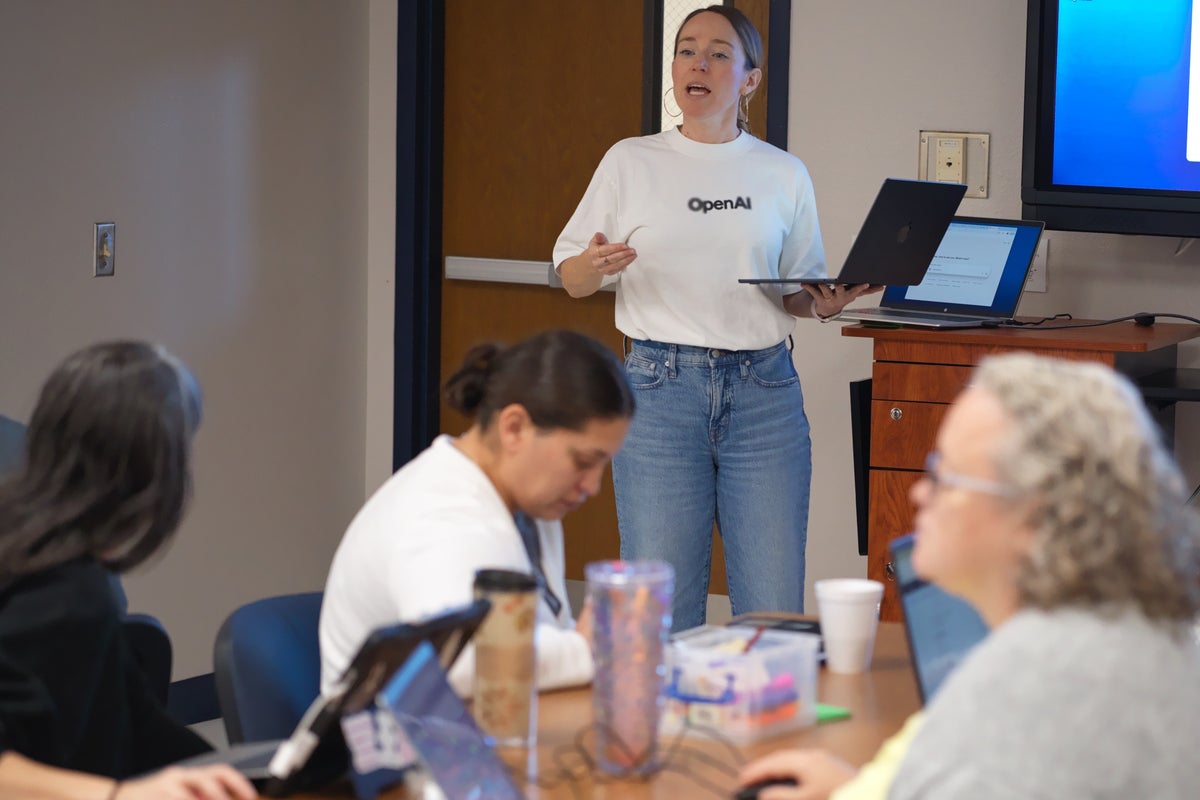UPDATE: In a groundbreaking initiative, Microsoft, OpenAI, and Anthropic are pouring a combined $20 million into training teachers for the AI revolution, with a pivotal focus on San Antonio. The announcement, made in July, positions teachers’ unions at the forefront of integrating artificial intelligence into education, addressing urgent concerns about AI’s role in the classroom.
On a heated Saturday, dozens of educators from the Northside Independent School District gathered to explore AI tools capable of instant grading and transforming lesson plans. “Are we going to be replaced with AI?” one teacher’s question resonated throughout the workshop, highlighting a shared anxiety among educators facing rapid technological changes.
This initiative marks an unprecedented collaboration between the American Federation of Teachers (AFT) and major tech corporations, aiming to ensure the nation’s four million educators remain relevant. AFT President Randi Weingarten emphasized the necessity of this partnership, stating, “There is no one else who is helping us with this. That’s why we felt we needed to work with the largest corporations in the world.”
Microsoft has committed $12.5 million over five years, while OpenAI contributes $8 million and Anthropic adds $500,000. With the funding, AFT plans to establish an AI training hub in New York City, aiming to train 400,000 teachers within the next five years through virtual and in-person workshops.
The urgency of this initiative is underscored by the National Education Association’s recent partnership with Microsoft, which has allocated a $325,000 grant to develop AI training programs for its 3 million members. NEA’s senior director, Daaiyah Bilal, stated their goal is to train at least 10,000 educators this school year.
Both unions have set clear terms for these partnerships: educators will lead training sessions that cover AI tools from various companies, ensuring that the focus remains on the best interests of teachers and students. The unions maintain ownership of all intellectual property developed through these trainings, addressing critical issues such as safety, privacy, and AI literacy.
The federal government has also recognized the need for AI education, establishing an AI Education Task Force and encouraging private investment. So far, over 100 companies have signed up to support this initiative. Tech giants see opportunities to integrate their tools into education, with Microsoft launching a $4 billion program that includes free access to its AI tools for schools in Washington state.
Despite the excitement, educators express caution. Microsoft CEO Brad Smith acknowledged that teachers should maintain a “healthy dose of skepticism” regarding tech company involvement, reminding them of the potential unintended consequences of AI in education, particularly concerning critical thinking skills.
At the workshop, educators like Gabriela Aguirre, a first-grade dual language teacher, were inspired by AI’s potential to save time and enhance lesson delivery. “If you can find ways to engage [students] with new technology, you’ve just got to do that,” she noted.
Middle school teacher Celeste Simone echoed this sentiment, expressing that AI tools have fundamentally changed her teaching approach. “I can give my students access to things that never existed before,” she said. “Once you’ve used it and see how helpful it is, I don’t think I could go back to the way I did things before.”
As the AI landscape evolves, this partnership between educators and technology companies marks a significant shift in how teachers prepare students for a future increasingly dominated by artificial intelligence. The next steps involve launching AI training hubs and mobilizing educators to effectively integrate these tools into their classrooms, setting the stage for a new era in education.
